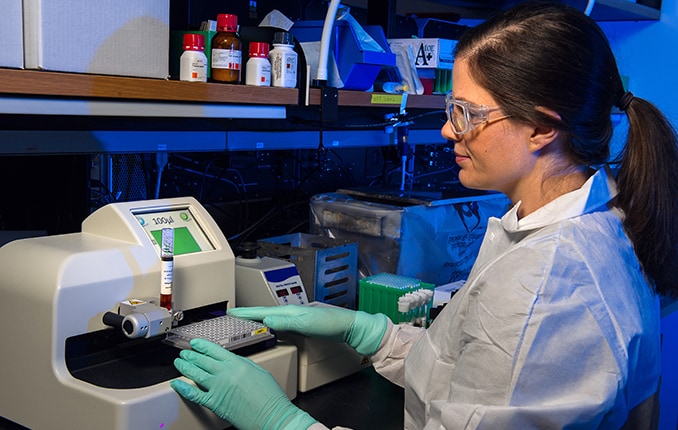Key points
- CDC tracks antimicrobial resistance and studies patterns of emerging resistance in enteric bacteria.
- CDC monitoring for resistance in enteric bacteria includes routine surveillance and outbreak investigations.

Surveillance
CDC, through NARMS, tracks antimicrobial resistance and studies patterns of emerging resistance in select bacteria transmitted commonly through food.
Surveillance helps identify patterns of emerging resistance that can guide public health prevention and policy efforts to protect people from resistant infections. This information is used by a variety of stakeholders, including federal regulatory agencies, policymakers, consumer advocacy groups, industry, and the public.
Laboratory testing and isolate submission
The CDC NARMS laboratory conducts antimicrobial susceptibility testing on isolates of enteric bacteria from sporadic cases and outbreaks of illness. The laboratory also confirms and studies enteric bacteria that have new antimicrobial resistance patterns and performs research to understand the genetic mechanisms of resistance and how they are spread.
Routine surveillance
Public health laboratories submit every 20th nontyphoidal Salmonella, Shigella, and E. coli O157 isolate received at their laboratories to CDC NARMS for antimicrobial susceptibility testing. They also submit every Salmonella serotype Typhi, serotype Paratyphi A, serotype Paratyphi C, and Vibrio (other than V. cholerae) isolate received at their laboratories.
Public health laboratories of the 10 state health departments that participate in CDC's Foodborne Diseases Active Surveillance Network (FoodNet) also forward a sample of Campylobacter isolates to CDC for susceptibility testing.
| Pathogen tested | Year testing began | Current sampling scheme |
|---|---|---|
| Salmonella, nontyphoidal1 | 1996 | 1 in 20 |
| E. coli O157 | 1996 | 1 in 20 |
| Shigella | 1999 | 1 in 20 |
| Campylobacter | 1997 | varies |
| Salmonella Typhi | 1999 | all |
| Salmonella Paratyphi A and C1 | 2008 | all |
| Vibrio species other than V. cholerae | 2009 | all |
1 From 1996–2007, Salmonella Paratyphi A, B, and C were included in the 1:20 sampling scheme for nontyphoidal Salmonella. Since January 2008, sites were asked to submit all Paratyphi A and C isolates to NARMS. Salmonella Paratyphi B isolates continue to be included in the 1 in 20 sampling scheme for nontyphoidal Salmonella.
Outbreak investigations
CDC NARMS tests enteric bacteria from outbreaks for antimicrobial resistance. Resistance patterns and mechanisms can help investigators identify the source of an outbreak or provide clues about the source of the outbreak. Investigations of outbreaks of resistant Salmonella traced to food-producing animals show how bacteria in food animals can impact human health.
